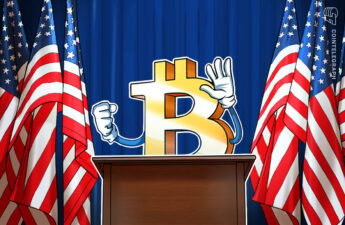Non-fungible tokens (NFTs), as we all know by now, are one-of-a-kind digital assets that come in many forms—Tweets, in-game items, digital art, and more. Since its creation, people have spent a lot of money to add these into their collection. There have been some crazy transactions for the most expensive NFTs over the past few years, so let’s take a deep dive into some of these exchanges.
However, before we take a look at some of the most expensive NFTs sold, let’s first understand why these digital assets have gained value.
What determines the value of art?
“Beauty is in the eye of the beholder.”
This is something that comes up a lot when it comes to how much people pay for art. But what is it, exactly, that drives people to spend millions of dollars on pieces they can display in their homes? Is it about bragging rights? Is it about what the art represents to them? Is it about the artist who created the piece? Does it just look pretty? Yes, to all.
The valuation of art is such a tricky thing sometimes because art, by nature, has no intrinsic value. We don’t eat it, drink it, wear it, or use it for shelter—the basic needs of any human being. So, what gives it value?
Many factors go into the valuation of a painting, sculpture, or any art form:
Aesthetic appeal – First things first, the piece needs to have a pleasing aesthetic. That standard may differ per person, but the one who’s buying needs to feel comfortable displaying works of art they’ll be seeing nearly every day.
The artist’s background, reputation, and appeal – Sometimes, art is driven by what is recognized and what people are saying about the artist. For example, even the smallest and most simple piece by Pablo Picasso will be worth a lot over time because of his influence in the art space.
The resell prospect of the piece – Just like with real estate, art can also be flipped. People can sometimes see the value of an up-and-coming artist and buy their early works in the hopes of reselling the piece in the future and making a profit.
How the piece impacts history – Another factor that plays a role in an artwork’s value is its role in society. Sometimes, a piece can become a story and contribute to understandings that communities use. An example would be Washington Crossing the Delaware, created in 1851 by Emanuel Leutze to depict Washington’s attack on the Hessians—which is currently on display in the Met.
The story behind the piece – If a piece of artwork has a fascinating story behind it, it may affect its value. Take Girl with a Pearl Earring (1665) as an example. Johannes Vermeer’s famous portrait of a woman with a pearl earring has stirred many conversations about the subject of the piece and how the artwork was created. Who is the painting of? How did he capture the fantastic realism of the piece? The more people talk about it, the more relevant the piece stays.
Uniqueness – Generally speaking, the most unique pieces of art are the most expensive. It’s the expression and creativity of the artist and its ability to reflect our world that gives nuance to our culture. The more unique a piece is, the more desirable it can be.
What makes NFT art so valuable?
Are what makes paintings and sculptures valuable applicable to digital art? Although the art being sold as the most expensive NFTs have many similarities to those being sold as paintings or sculptures, the nature of each is entirely different. Real-world paintings and sculptures will usually have certificates of authenticity to prove that they’re original. NFT artworks have a similar certification, but it’s engraved within their code instead of a separate piece of paper.
Despite their differences, the factors that determine the value of NFT artwork are similar:
Your perception of the piece – What does the artwork mean to you? Is it something you want to flip or a work of art that you want to keep in your collection?
The value behind the creator – Is the digital artist reputable? What is their underlying value?
Potential value – What will this digital asset be worth in the future? Is it from an up-and-coming artist or creator? Are celebrities endorsing it?
Market value – What are the other pieces from the same creator selling for?
All of these factors go into supply and demand. NFTs, by nature, are going to be low supply—since they’re 1-of-1 assets. Therefore, what drives prices up and down is the demand.
The top five NFT sales of all time
Now that we know what goes into the value of an NFT, let’s take a look at some of the most expensive NFT transactions of all time:
1. Everydays: The First 5000 Days
Everydays is a piece by renowned digital artist Mike “Beeple” Winkelman. He posted an image online every day since 2007 and made a collage showcasing the first 5,000 days to create this piece.
Photo source: The Verge
Some of the images in the piece involve figures from pop culture like Donald Trump, the former President of the United States, and Jeff Bezos, the founder and executive chairman of Amazon.
The piece was purchased at a whopping 69.3 million USD (which was paid in Ether), making it one of the most expensive works by a living artist.
2. CryptoPunk #7523
At this point, NFTs are synonymous with CryptoPunks (as you’ll see later on in the list). They’ve dominated the NFT artwork market and have four pieces ranking in the top 10 most expensive NFTs ever sold.
These NFT artworks feature 24×24 pixel, 8-bit-style characters that were launched by Larva Labs in 2017. They represent the crypto-anarchist philosophy and were the first NFTs ever released on the Ethereum blockchain.
#7523, also known as Covid Alien, belongs to the alien-variety group of CryptoPunks—the most highly sought-after group. They feature teal-colored skin, and #7523 specifically showcases that desirable alien skin with a surgical cap and mask.

Photo source: Larva Labs
Of the 10,000 CryptoPunks in existence, only nine have alien skin, making them more collectible than all the others. This one, specifically, sold for 11.8 million USD.
3. CryptoPunk #3100
With all the hype surrounding #7523, it’s no surprise that another alien-skinned CryptoPunk is on the list of most expensive NFTs sold (and it isn’t the last one). #3100 features the same alien wearing just a white and blue headband, setting it apart from the other nine aliens.

Photo source: Larva Labs
This specific CryptoPunk was sold in March 2021 for 7.58 million USD and was immediately relisted for sale. Now, it sits at the 35,000 ETH price point—which, at the time of writing, is worth around 165 million USD. If it ends up selling at this price, it would obliterate all the other NFT sales on this list and would be crowned as the most expensive NFT ever sold.
4. CryptoPunk #7804
The third alien CryptoPunk to make this list features a pipe-smoking alien with a cap and sunglasses. It was also sold in March 2021 for 7.57 million USD to an anonymous buyer who went by Peruggia on Twitter.

Photo source: Larva Labs
Among the 10,000 CryptoPunks, only 254 wear forward-facing caps, 378 smoke pipes, and 317 have small shades. #7804 features all three of these as well as the alien skin, making it one of the rarest CryptoPunks and most expensive NFTs out there.
5. Crossroads
To end our top-five list of most expensive NFT sales, we’re going back to the work of Beeple. The piece titled Crossroads was a political statement by the artist, which poked fun at Donald Trump, the former President of the United States.

Photo source: NFT Artwork
Although Trump wasn’t Beeple’s first political target, Crossroads made a big-enough splash to sell for 6.66 million USD, putting two of his artworks on the list of the most expensive NFTs sold. This piece followed right after President Joe Biden won the elections and it’s said that we would have been treated to a different piece if Donald Trump won—one that featured the former president with a crown while walking through flames.
The advent of NFT art
There’s no doubt that these record-breaking sales have created momentum in the NFT space. Right now, it doesn’t show any signs of slowing down and will probably continue to shake up the art world for the foreseeable future.
What does the future hold for these compositions? One day, will we be saying CryptoPunk and the Mona Lisa in the same comparative sentences? Right now, the future seems unclear. However, it also seems bright. As to where NFTs will take digital art and artists along the way, we’ll just have to wait and see.
For now, let’s just enjoy the spectacle and see where it goes.



